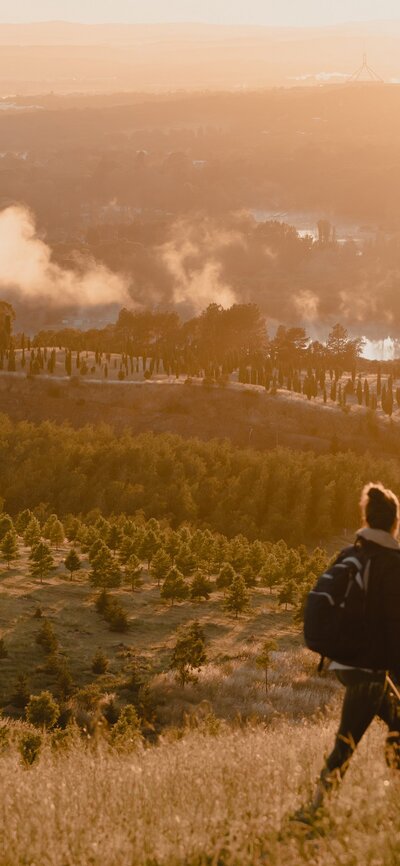

Experience Ngunnawal Culture at the National Arboretum Canberra
Updated 13 Sep 2024
Reconnect with Ngunnawal Heritage at the National Arboretum Canberra
Ngunnawal man Richard Allan gives visitors a chance to experience his culture firsthand at the National Arboretum Canberra.
Many believe that “Canberra”, the name given to Australia’s capital in 1913, comes from the local Aboriginal word for “meeting place”. Today, the city continues to maintain those ties to its ancestral history, particularly at the National Arboretum Canberra (nationalarboretum.act.gov.au), where visitors not only have the opportunity to learn about the region’s Ngunnawal culture but can also experience it firsthand.
Spanning 250 hilly hectares, the Molonglo Valley site is best known for its 44,000 rare and endangered trees. Sign up for one of Ngala Tours’ Walk on Country experiences (held weekly) and you’ll explore the mosaic of forests and get hands-on with stone axes, coolamons and clapsticks. You might even master the physics of throwing a boomerang.
“We talk about caring for Country and why it plays such a significant role in culture today,” says Richard Allan, the Arboretum’s Indigenous tourism officer and a Ngunnawal man. “The employment of Ngunnawal staff means the connection to the land is very real here.”
For Allan, visiting the Bush Tucker Garden is a tour highlight. “It feels as though I’m walking back in time, connecting with the ancestors,” he says. “I love knowing which plants can be used for medicine and which ones for food.” As you stroll, you’ll be invited to touch plant species his people have relied on for eons, including “bootlace bush”, both eaten and used as string.
Lands in and around the ACT and southern NSW have been Ngunnawal Country for tens of thousands of years. Allan, who says he has “been on a lifelong learning journey”, wants to share the knowledge he’s gained from his family, Elders and the community.
“My job is to immerse visitors in the Ngunnawal experience,” he says. “This walk brings the landscape to life through the eyes of the Ngunnawal people and celebrates our ancient heritage and traditions. I want people to have a connection to the land like we have had for generations.”
Mununja the Butterfly Garden, another special spot at the Arboretum, is inspired by a Dreamtime story of the Ngunnawal people in which a young girl becomes a butterfly to avoid marrying the evil Gunga. Designed to reflect the geometric patterns of butterfly wings, the garden is filled with plants that provide food and habitat for butterflies and are culturally significant.
More than just a place of beauty and conservation, the Arboretum is somewhere for people to gather and learn – a meeting place, if you will, in a city designed to foster human connection. “It’s so important that the Arboretum is here,” says Allan. “It promotes a deeper understanding of the landscape and respect for First Nations traditions and culture.”

Find more to explore in Canberra
Accommodation deals







